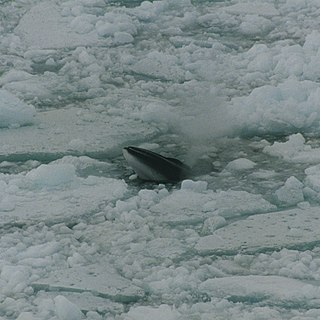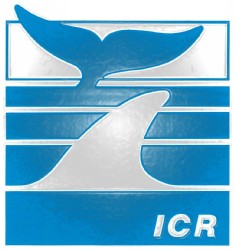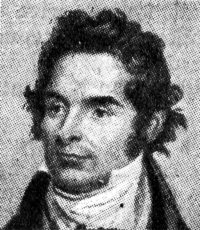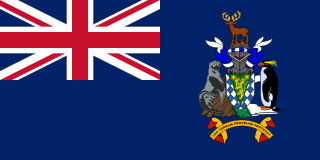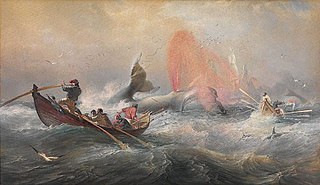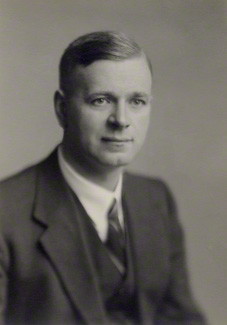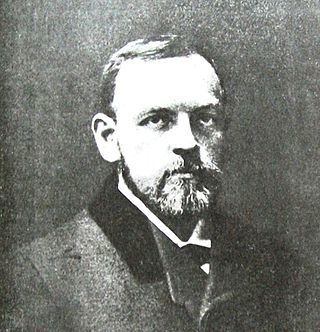| Volume Pages/Plates/Charts | Title | Author | Published |
|---|
| Volume I |
|---|
| List of Personnel | | |
pp. 1–140
Plates I - VI | Station List 1925 - 1927 | | January 1929 |
pp. 143–232
Plates VII - XVIII | Objects, Equipment and Methods | S Kemp ScD
A C Hardy MA
N A Mackintosh ARCS MSc | July 1929 |
pp. 235–255
Plates XIX - XXIV | The Natural History of the Elephant Seal
with Notes on Other Seals Found at South Georgia | L Harrison Matthews MA | July 1929 |
pp. 259–540
Plates XXV - XLIV | Southern Blue and Fin Whales | N A Mackintosh ARCS MSc
J F G Wheeler MSc | December 1929 |
| pp. 543–560 | Parasitic Nematoda and Acanthocephala Collected in 1925 - 1927 | H A Bayliss MA DSc | December 1929 |
pp. 563–592
Plates XLV - LVI | The Birds of South Georgia | L Harrison Matthews MA | December 1929 |
| Volume II |
|---|
| pp. 3–222 | Polychaete Worms | C C A Monroe MA | October 1930 |
pp. 225–260
Plate I | Thoracic Cirripedes Collected in 1925-1927 | C A Nilsson-Cantell, Sweden | October 1930 |
pp. 263–370
Plate II | Oceanic Fishes and Flatfishes Collected in 1925 - 1927 | J R Norman | October 1930 |
pp. 373–402
Plates III - IV | Cephalopoda, I. Octopoda | G C Robson MA | November 1930 |
pp. 405–434
Plate V | The Age of Fin Whales at Physical Maturity with a Note on Multiple Ovulations | J F G Wheeler MSc | January 1931 |
pp. 437–482
Plates VI - VII | The Anatomy of a Marine Ostracod Cypridina (Doloria) Levis Skogsberg | H Graham Cannon ScD | February 1931 |
| Volume III |
|---|
| List of Personnel January 1932 | | |
pp. 3–132
Plates I - X | Station List 1927 - 1929 | | January 1931 |
pp. 135–198
Plates XI - XXXI | The South Sandwich Islands
(With a report on Rock Specimens by GW Tyrrell ARCSc DSc FGS FRSE) | S Kemp ScD FRS
A L Nelson RNR | November 1931 |
pp. 201–222
Plate XXXII | Nebaliacea | H Graham Cannon ScD | December 1931 |
pp. 225–260
Plates XXXIII - XXXVIII | Cephalodiscus | C C John MA | December 1931 |
| pp. 263–268 | Spiders Collected by the Discovery Expedition,
with a Description of a New Species from South Georgia | W S Bristowe BA FZS | December 1931 |
pp. 269–296
Plate XXXIX | Mollusca: Gastropoda Thecosomata and Gymnosomata | Anne L Massy | March 1932 |
pp. 299–344
Plates XL - XLIV
Charts 1 - 4 | Narrative of Hydrographic Survey Operations in South Georgia and the South Shetland Islands | Lt Cdr J M Chaplin RN | June 1932 |
| Volume IV |
|---|
pp. 3–230
Plates I - IV | Station List 1929 - 1931 | | July 1932 |
| pp. 235–265 | Oligochaeta. Part I. Microdrili (Mainly Enchytraeidae) | J Stephenson CIE MB DSc FRS | May 1932 |
| pp. 267–291 | Oligochaeta. Part II. Earthworms | Grace E Pickford PhD,
Osborn Zoological Laboratory, Yale University | May 1932 |
| pp 293 – 460v Plates VI - XVII | Foraminifera. Part I. The Ice-Free Area of the Falkland Islands and Adjacent Seas | Edward Heron-Allen FRS
Arthur Earland FRMS | August 1932 |
| Volume V |
|---|
| pp 3 – 326v Plate I | Amphipoda | K H Barnard DSc FLS | August 1932 |
| pp. 329–363 | The Vascular Networks (Retia Mirabilia) of the Fin Whale (Balaenoptera physalus) | F D Omanney ARCS BSc | September 1932 |
pp. 365–466
Plates II - III | The Uro-Genital System of the Fin Whale (Balaenoptera physalus) | F D Omanney ARCS BSc | September 1932 |
pp. 469–484
Plate IV | Lobster-krill: Anomuran Crustacea that are the Food of Whales | L Harrison Matthews MA | November 1932 |
| Volume VI |
|---|
| pp. 1–138 | Pycnogonida | Isabella Gordon DSc PhD,
Assistant keeper in the Department of zoology, British Museum (Natural History) | December 1932 |
pp. 139–164
Plates I - VI | Report on Penguin Embryos Collected During the Discovery Investigations | C W Parsons BA,
Lecturer in zoology at the University of Glasgow | December 1932 |
pp. 165–190
Plates VII - XLII | On the Distribution and Movements of Whales on the South Georgia and South Shetland Whaling Grounds | Stanley Kemp ScD FRS
A G Bennett | December 1932 |
pp. 191–204
Plates XLIII - XLIV | On the Development of Cephalodiscus | C C John MA DSc DIC | December 1932 |
pp. 205–236
Plates XLV - XLVII
Charts 1 - 7 | Report on Soundings Taken During the Discovery Investigations 1926 - 1932 | H F P Herdman MSc | December 1932 |
pp. 237–392
Plates XLVIII-LVII | Sponges | Maurice Burton MSc,
Assistant-Keeper, Department of Zoology, British Museum (Nat. Hist.) | December 1932 |
| Volume VII |
|---|
| pp. 3–15 | Fossil Forminifera from the Burdwood Bank and their Geological Significance | W A Macfadyen MC MA PhD FGS | February 1933 |
| pp. 17–27 | Faecal Pellets from Marine Deposits | Hilary B Moore BSc | March 1933 |
pp. 29–138
Plates 1 - VII | Foraminifera. Part II, South Georgia | Arthur Earland FRSE FRMS | June 1933 |
| pp. 139–170 | On Vertical Circulation in the Ocean due to the Action of the Wind with Application to Conditions within the Antarctic Circumpolar Current | H U Sverdrup | November 1933 |
pp. 173–238
Plates VIII - X | A General Account of the Hydrology of the South Atlantic Ocean | G E R Deacon BSc | November 1933 |
pp. 241–252
Plates XI - XIII | Whaling in the Dominion of New Zealand | F D Ommanney ARCS BSc | December 1933 |
pp. 255–362
Plate XIV | Isopod Crustacea. Part I, The Family Serolidae | Edith M Sheppard MSc | December 1933 |
pp. 365–406
Plate XV | Some Aspects of Respiration in Blue and Fin Whales | Alec H Laurie MA | December 1933 |
| Volume VIII |
|---|
| List of Personnel March 1934 | | |
| pp. 3–270 | On the Phytoplankton of the South-West Atlantic and the Bellingshausen Sea | T John Hart BSc | January 1934 |
pp. 271–318
Plates I - XIII | The Southern Sea Lion, Otaria byronia (De Blainville) | J E Hamilton MSc | January 1934 |
| pp. 321–330 | On a New Species of Mite of the Family Halarachnidae from the Southern Sea Lion | Susan Finnegan BSc PhD | January 1934 |
| pp. 331–396 Plates XIV - XV
| Scyphomedusae | G Stiasny DSC, Leiden | February 1934 |
| Volume IX |
|---|
| pp. 3–66 | Hydrology of the Bransfield Strait | A J Clowes M.Sc. ARCS | February 1934 |
| pp. 67–160 | Distribution of the Macroplankton in the Atlantic Sector of the Antarctic | N A Mackintosh D.Sc | April 1934 |
|
pp. 163–174
Plate I | The Sub-Antarctic Forms of the Great Skua (Catharacta skua skua) | J E Hamilton M.Sc. | June 1934 |
pp. 177–206
Plates II - XIV | The Marine Deposits of the Patagonian Shelf | L Harrison Matthews MA | August 1934 |
| pp. 209–216 | The Development of Rhincalanus | Robert Gurney | September 1934 |
pp. 217–294
Plates XV - XVI | Nemerteans from the South Atlantic and Southern Oceans | J F G Wheeler D.Sc. | November 1934 |
pp. 297–350
Plates XVI - XXII | The Sea Floor Deposits. I General Characteristics and Distribution | E Neaverson DSc FGS | December 1934 |
| pp. 351–372 | On the Stock of Whales at South Georgia | J FG Wheeler D.Sc. | December 1934 |
| Volume X |
|---|
pp. 3–210
Plates I-X | Foraminifera, Part III. The Falklands Sector of the Antarctic (Excluding South Georgia) | Arthur Earland FRMS | December 1934 |
| pp. 211–248 | The Falkland Species of the Crustacean Genus Munida | G W Rayner BSc | April 1935 |
pp. 249–282
Plate XI | On the Diatoms of the Skin Film of Whales, and their Possible Bearing on Problems of Whale Movements | T John Hart MSc | June 1935 |
pp. 285–382
Plates XII - XXV | The South Orkney Islands | James W S Marr MA BSc | November 1935 |
| pp. 383–390 | Report on Rocks from the South Orkney Islands | CE Tilley BSc PhD | December 1935 |
| Volume XI |
|---|
| pp. 1–456 | The Plankton of the South Georgia Whaling Grounds and Adjacent Waters | A C Hardy MA
ER Gunther MA | November 1935 |
| pp. 457–510 | The Continuous Plankton Recorder | A C Hardy MA | December 1936 |
| pp. 511–538 | Observations on the Uneven Distribution of Oceanic Plankton | A C Hardy MA | November 1936 |
| Volume XII |
|---|
| List of Personnel 1936 | | |
| pp. 1–58 | Coast Fishes. Part I. The South Atlantic | J R Norman | December 1935 |
| pp. 59–198 | Polychaete Worms | C C A Monro MA | January 1936 |
pp. 199–348
Plates I - IX | Echinoidea and Ophiuroidea | Th. Mortensen | March 1936 |
pp. 349–378
Plates X - XII | The Birds of the South Orkney Islands | R A B Ardley RNR | February 1936 |
| pp. 379–440 | Larvae of Decapod Crustecea | Robert Gurney DSc | September 1936 |
| Volume XIII |
|---|
pp. 1–76
Plates I - IIa | Foraminifera. Part IV, Additional Records from the Weddell Sea Sector from Material Obtained by the SY Scotia
With a report on Some Crystalline Components of the Weddell Sea Deposits. by FA Bannister MA | Arthur Earland FRMS | September 1936 |
| pp. 77–106 | The Royal Research Ship Discovery II | R A B Ardley RNR
N A Mackintosh DSc | July 1936 |
pp. 109–276
Plates XIV - XVI | A Report on Oceanographical Investigations in the Peru Coastal Current | E R Gunther MA | October 1936 |
| pp. 277–384 | Rhincalanus Gigas (Brady) A Copepod of the Southern Macroplankton | F D Ommanney PhD ARCS | October 1936 |
| Volume XIV |
|---|
| pp. 1–192 | On the Development and Distribution of the Young Stages of Krill (Euphausia superba) | F C Fraser BSc | December 1936 |
| pp. 193–324 | The Southern Species of the genus Euphausia | D. Dilwyn John | 14 December 1936 |
pp. 325-350
Plates I - V | The reproductive system of Euphausia superba | Helene E. Bargmann PhD | 25 June 1937 |
| pp. 351–404 | Larvae of Decapod Crustacea. Part IV. Hippolytidae | Robert Gurney DSc | June 1937 |
| Volume XV |
|---|
| pp. 1–124 | The Hydrology of the Southern Ocean | G E R Deacon BSc | March 1937 |
| pp. 125–152 | Note on the Dynamics of the southern Ocean | G E R Deacon | March 1937 |
| pp. 153–222 | New Species of Marine Mollusca from New Zealand | A W B Powell | March 1937 |
| pp. 223–284 | The Age of Female Blue Whales and the Effect of Whaling on the Stock | Alec H Laurie MA | May 1937 |
| Volume XVI |
|---|
pp. 1–150
Plates I - V | Coast Fishes. Part II. The Patagonian Region | J R Norman | February 1937 |
pp. 151–364
Plates VI - XIII | The Plankton Diatoms of the Southern Seas | N Ingram Hendey FLS FRMS | April 1937 |
| pp. 365–412 | The Seasonal Circulation of the Antarctic Macroplankton | N A Mackintosh DSc | April 1937 |
pp. 413–446
Plate XIV | Rhizosolenia curvata Zacharias, an Indicator Species in the Southern Ocean | T John Hart DSc | May 1937 |
| Volume XVII |
|---|
pp. 1–6
Plate I | On the Histological Structure of Cetacean Lungs | F Haynes MA
Alec H Laurie MA | July 1937 |
pp. 9–92
Plate II | The Humpback Whale, Megaptera nodosa | L. Harrison Matthews, M.A. | January 1938 |
pp. 95-168
Plates III-XI | The Sperm Whale, Physeter catodon | L. Harrison Matthews, M.A. | March 1938 |
pp. 169-182
Plates XII-XVII | Notes On The Southern Right Whale, Eubalaena australis | L. Harrison Matthews, M.A. | April 1938 |
pp. 185-290
Plates XVIII, XIX | The Sei Whale, Balaenoptera borealis | L. Harrison Matthews, M.A. | June 1938 |
| pp. 291–344 | Larvae of Decapod Crustecea. Part V. Nephropsidea and Thalassinidea | Robert Gurney D.Sc. | July 1938 |
| Volume XVIII |
|---|
pp. 1–104
Plate I | Coast Fishes. Part III. The Antarctic Zone | J R Norman | May 1938 |
pp105 – 120
Plate II | On the Operation of Large Plankton Nets | James W S Marr MA BSc | August 1938 |
pp. 121–222
Plates III - VI | Crinoidea | D Dilwyn John MSc | October 1938 |
| pp. 223–238 | Thoracic Cirripeded Collected in 1925 - 1936 | C A Nilsson-Cantell, Sweden | January 1939 |
pp. 239–264
Plates VII - XIII | The Leopard Seal Hydrurga leptonyx (De Blainville) | J E Hamilton MSc | October 1939 |
pp. 265–322
Plates XIV - XIX | Hydromedusae from the Falkland Islands | Edward T Browne
PL Kramp | November 1939 |
pp. 323–338
Plates XX - XXI | Madreporarian Corals, with an Account of Variation in Carophyllia | J Stanley Gardiner MS FRS | November 1939 |
| Volume XIX |
|---|
pp. 1–120
Plates I - XXV | Phosphate and Silicate in the Southern Ocean | A J Clowes MSc ARCS | October 1938 |
pp. 121–164
Plates XXVII - XXXIII | A Second Report on the Southern Sea Lion, Otaria Byronia (De Blainville) | J E Hamilton MSc | December 1939 |
pp. 165–184
Plates XXXIV - XXXVIII | MacRobertson Land and Kemp Land, 1936
With a Report on Rock Specimens by CE Tilley FRS | George W Rayner | May 1940 |
pp. 185–244
Plates XXXIX - XLII | On the Anatomy of Gigantocypris Mulleri | H Graham Cannon ScD FRCS | July 1940 |
pp. 245–284
Plates XLIII - LXVIII | Whale Marking, Progress and Results to December 1939 | George W Rayner | July 1940 |
pp. 285–296
Plates LXIX - XCV | Distribution of the Pack Ice in the Southern Ocean | N A Mackintosh DSc
HFP Herdman MSc | July 1940 |
| Volume XX |
|---|
| pp. 1–68 | Larvae of Decapod Crustacea. Part VI. The Genus Sergestes | R Gurney and M V Lebour | July 1940 |
pp. 69–306
Plates I - XXIII | Asteroidea | Walter K Fisher | November 1940 |
pp. 307–382
Plates XXIV - XXVI | On the Structure of the Photophores of some Decapod Crustacea | Ralph Dennell DSc | December 1940 |
| Volume XXI |
|---|
pp. 1–226
Plates I - IV | Station List 1931 - 1933 | | February 1941 |
pp. 227–234
Plates V - VI | A Rare Porpoise of the South Atlantic, Phocaena dioptrica (Lahille, 1912) | J E Hamilton DSc | February 1941 |
pp. 235–260
Plates VII - VIII | The Euchiuridae, Sipunculidae and Priapulidae Collected by the Ships of the Discovery Committee During the Years 1926 to 1937 | A C Stephen DSc | October 1941 |
| pp. 261–356 | Phytoplankton Periodicity in Antarctic Surface Waters | T John Hart DSc | October 1942 |
| Volume XXII |
|---|
pp. 1–196
Plate I - IV | Station List 1933 - 1935 | | March 1942 |
| pp. 197–300 | The Southern Stocks of Whalebone Whales | N A Mackintosh DSc | June 1942 |
pp. 301–510
Plates V - XIII | Polyzoa (Bryozoa) I. Scrupocellariidae, Epistomiidae, Farciminariidae, Bicellariellidae, Aeteidae, Scrupariidae | Anna B Hastings MA PhD
British Museum (Natural History) | September 1943 |
| Volume XXIII |
|---|
| pp. 1–18 | The Gut of Nebaliacea | Helen G Q Rowett | October 1943 |
| pp. 19–36 | On a Specimen of the Southern Bottlenosed Whale, Hyperoodon planifrons | F C Fraser DSc | March 1945 |
| pp 37 – 102 | Report on Rocks from West Antarctica and the Scotia Arc | G W Tyrell ARCSc DSc FGS FRSE | June 1945 |
| pp. 103–176 | The Development and Life-History of Adolescent and Adult Krill, Euphausia superba | Helene E Bargmann PhD | June 1945 |
pp. 177–212
Plates I - XIV | The Antarctic Convergence and the Distribution of Surface Temperatures in Antarctic Waters | N A Mackintosh DSc | January 1946 |
pp. 213–222
Plate XV | Nebalipsis typica | H Graham Cannon ScD FRS | August 1946 |
pp. 223–408
Plate XVI | Report on the Trawling Surveys on the Patagonian Continental Shelf
Compiled mainly from manuscripts left by the late ER Gunther MA | T John Hart DSc | December 1946 |
| Volume XXIV |
|---|
pp. 1–196
Plates I - III | Station List 1935 - 1937 | | November 1944 |
pp. 197–422
Plates IV - VI | Station List 1937 - 1939 | | April 1947 |
| Volume XXV |
|---|
pp. 1–30
Plates I - IV | Antarctic Pyrenocarp Lichens | I Mackenzie Lamb D.Sc. | March 1948 |
pp. 31–38
Plates V - XXII | Whale Marking II. Distribution of Blue, Fin and Humpback Whales Marked from 1932 to 1938 | George W Rayner | May 1948 |
pp. 39–106
Plates XXIII - XXXI | Soundings Taken During the Discovery Investigations, 1932–39 | H F P Herdman M.Sc. | September 1948 |
pp. 107–112
Plate XXXII | On the Reproductive Organs of Holozoa Cylindrica Lesson | Dr A Arnback Christie-Linde | March 1949 |
pp. 143–280
Plates XXXIV - XXXVII | Discovery Investigations Station List RRS William Scoresby 1931 - 1938 | | September 1949 |
pp. 281–314
Plates XXXVIII - XLI | Ellobiopsidae | Dr H Boschma FMLS CMZS | November 1949 |
| Volume XXVI |
|---|
pp. 1–32
Plate I | The Bathypelagic Angler Fish Ceratias holbölli Kröyer | Robert Clarke MA | September 1950 |
pp. 33–46
Plates II - IV | Stylasteridae (Hydrocorals) from Southern Seas | Prof. Hjalmar Broch
University of Oslo | January 1951 |
pp. 47–196
Plates V - X | Antarctic and Subantarctic Mollusca: Pelecypoda and Gastropoda | A W B Powell FRSNZ | March 1951 |
| pp. 197–210 | The Vampyromorpha of the Discovery Expeditions | Grace E Pickford | July 1952 |
pp. 211–258
Plates XI - XII | Discovery Investigations Station List RRS William Scoresby 1950 | | April 1953 |
| pp. 259–280 | A Preliminary Report on the Ostracoda of the Benguela Current | E J Iles | October 1953 |
pp. 281–354
Plates XIII - XVIII | Open Boat Whaling in the Azores: The History and Present Methods of a Relic Industry | Robert Clarke MA | February 1954 |
| pp. 355–384 | Dispersal in Blue and Fin Whales | S G Brown | January 1954 |
| Volume XXVII |
|---|
pp. 1–162
Plates I - XII | Siphonophora of the Indian Ocean
Together with Systematic and Biological Notes on Related Specimens from Other Oceans | A K Totton
British Museum (Natural History) | April 1954 |
| pp. 163–200 | The Pelagic Mollusca of the Benguela Current
Part I. First Survey RRS William Scoresby March 1950
With an Account of the Reproductive System and Sexual Succession of Limacina bulimoides | J E Morton PhD | August 1954 |
| pp. 201–208 | The Circumpolar Continuity of Antarctic Plankton Species | A de C Baker
National Institute of Oceanography | August 1954 |
| pp. 219–234 | The Planktonic Decapod Crustacea and Stomatopoda of the Benguela Current
Part I. First Survey RRS William Scoresby March 1950 | Marie V Lebour DSc | October 1954 |
pp. 235–278
Plate XIII | The Distribution of Sagitta gazella Ritter-Zahony | P M David | April 1955 |
| pp. 279–291 | Cumacea of the Benguela Current | N S Jones PhD
Marine Biological Station, Port Erin | June 1955 |
pp. 293–302
Plates XIV - XVIII | The Wax Plug in the External Auditory Meatus of the Mysticeti | P E Purves
Dept of Zoology, British Museum (Nat. Hist.) | July 1955 |
| pp. 337–376 | Euphausiacea of the Benguela Current
First Survey, RRS William Scoresby, March 1950 | Brian P Boden | August 1955 |
pp. 377–395
Plates XX - XXI | Cestodes of Whales and Dolphins from the Discovery Collections | S Markowski | September 1955 |
| Volume XXVIII |
|---|
| pp. 1–190 | Mysidacea | Olive S Tattersall DSc | November 1955 |
| pp. 191–236 | The Distribution of the Standing Crop of Zooplankton in the Southern Ocean | P Foxton | April 1956 |
pp. 237–298
Plates I - II | Sperm Whales of the Azores | Robert Clarke | December 1956 |
pp. 299–398
Plates III - V | Station List 1950 - 1951 | | November 1955 |
| Volume XXIX |
|---|
pp. 1–128
Plates I - VII | Hydromedusae from the Discovery Collections | P L Kramp | February 1957 |
| pp. 129–140 | New Observations on the Aberrant Medusa Tetraplatia volitans Busch | Willam J Rees and Ernest White
British Museum (Natural History) | February 1957 |
pp. 141–198
Plates VIII - IX | Isopod Crustacea Part II. The Sub-order Valvifera. Families: Idoteidae, Pseudidotheidae and Xenarctuidae Fam.N.
With a Supplement to Isopod Crustacea, Part I. The Family Serolidae | Edith M Shephard
Department of Zoology, Cardiff | September 1957 |
pp. 199–228
Plates X | The Distribution of the Chaetognatha of the Southern Ocean | P M David | April 1958 |
| pp. 229–244 | The Reliability of Deep-Sea Reversing Thermometers | H F P Herdman and
L H Pemberton | May 1958 |
pp. 245–280
Plates XI - XII | Octocorals Part I. Pennaturalarians | Hjalmar Broch
The Zoological Laboratory, Oslo-Blindern, Norway | December 1958 |
pp. 281–308
Plate XIII | The Foetal Growth Rates of Whales with Special Reference to the Fin Whale, Balaenoptera Physalus Linn. | R M Laws
National Institute of Oceanography | March 1959 |
| pp. 309–340 | The Distribution and Life History of Euphausia triacantha Holt and Tatersall | A de C Baker | April 1959 |
| Volume XXX |
|---|
pp. 1–160
Plates I - VI | Ascidiacea | R H Millar | February 1960 |
| pp. 161–300 | The Distribution of Pelagic Polychaetes in the South Atlantic Ocean | Norman Tebble
British Museum (Natural History) | April 1960 |
pp. 301–408
Plates VII - XXVIII | Studies on Physalia physalis (L.)
Part I. Natural History and Morphology
Part II. Behaviour and Histology |
A K Totton
G O Mackie | August 1960 |
| Volume XXXI |
|---|
pp. 1–122
Plates I - III | Swimbladder Structure of Deep-Sea Fishes in Relation to Their Systematics and Biology | N B Marshall
British Museum (Natural History) | November 1960 |
| pp. 123–298 | The Benguela Current | T John Hart
Ronald I Currie | November 1960 |
| pp. 299–326 | The Appendages of the Halocyprididae | E J Iles
Dept. Zoology, Univ. of Manchester | February 1961 |
pp. 327–486
Plates IV - VII | Reproduction, Growth and Age of Southern Fin Whales | R M Laws | November 1961 |
| Volume XXXII |
|---|
pp. 1–32
Plates I - II | Salpa fusiformis Cuvier and Related Species | P Foxton | October 1961 |
33 - 464
Plate III | The Natural History and Geography of the Antarctic Krill (Euphausia superba Dana) | James Marr | November 1962 |
| Volume XXXIII |
|---|
pp. 1–54
Charts 1 - 11 | The Movements of Fin and Blue Whales within the Antarctic Zone | S G Brown | March 1962 |
pp. 55–92
Plate I
| Rhizocephala | H Boschma
Rijksmuseum van Ntuurijke Historie, Leiden | November 1962 |
pp. 93–250
Plates II - VII | Antarctic and Subantarctic Mollusca: Amphineura, Scaphopoda and Bivalva | R K Dell
Dominion Museum, Wellington, New Zealand | November 1964 |
pp. 251–307
Plates VIII - XXI | Larves de Cerianthaires | E Leloup
Institut royal des Sciences naturelles de Belgique | November 1964 |
| pp. 309–334 | The Latitudinal Distribution of Euphausia Species in the Surface Waters of the Indian Ocean | A de C Baker
National Institute of Oceanography, Wormley, Godalming, Surrey | April 1965 |
pp. 335–384
Plates XXII - XXVI | Development of the stolon in Salpa fusiformis Cuvier and Salpa aspera Chamisso | R M Sawicki
Rothamstead Experimental Station | April 1966 |
| Volume XXXIV |
|---|
| pp. 1–116 | The Distribution and Life-History of Salpa Thompsoni Foxton with Observations on a Related Species, Salpa Gerlachei Foxton | P Foxton | July 1966 |
| pp. 117–162 | The Distribution and Life-History of Calanoides acutus (Giesbrecht) | Keith J H Andrews | September 1966 |
| pp. 163–198 | The Distribution of Parathemisto Gaudichaudii (Guer), with Observations on its Life-History in the 0° - 20° E Sector of the Southern Ocean | Jasmine E Kane | October 1966 |
pp. 199–394
Plates 1 - 17 | Polyzoa (Bryozoa) - Ascophora - from North New Zealand | Neil Andrew Powell
National Museum of Canada, Ottawa | September 1967 |
| Volume XXXV |
|---|
pp. 1–30
Plates I - IV | Seasonal Formation of Laminae in the Ear Plug of the Fin Whale | H S J Roe
Whale Research Unit,
National Institute of Oceanography | September 1967 |
| pp. 31–134 | Seasonal Cycles and Reproduction in Sei Whales of the Southern Hemisphere | Ray Gambell
Whale Research Unit,
National Institute of Oceanography | September 1968 |
| pp. 135–178 | Spirorbis Species (Polychaeta: Serpulidae) From the South Atlantic | Tegwyn Harris
Department of Zoology,
Exeter University | September 1969 |
pp. 179–198
Plates V - VI | On Ihlea Magalhanica (Apstein) (Tunicata: Salpidae) and Ihlea Racovitzai (Van Beneden) | P Foxton
National Institute of Oceanography | January 1971 |
| pp. 199-358 | Sperm whales off Durban | R Gambell
Whale Research Unit, National Institute of Oceanography | 1972 |
| Volume XXXVI |
|---|
| pp. 1–94 | Life Cycle of Antarctic Krill in Relation to Ice and Water Conditions | N A Mackintosh
Natural Environment Research Council | February 1972 |
pp. 95–156
Plates I - XVII | Distribution of Post-Larval Krill in the Antarctic | N A Mackintosh
Natural Environment Research Council | December 1973 |
| pp. 157–178 | Sizes of Krill Eaten by Whales in the Antarctic | N A Mackintosh
Natural Environment Research Council | April 1974 |
| pp. 179–266 | Monogena and Digena from Fishes | David I Gibson
British Museum (Natural History) | February 1976 |
| Volume XXXVII |
|---|
| pp. 1–324 | Cephalopoda in the Diet of Sperm Whales of the Southern Hemisphere and their Bearing on Sperm Whale Biology | Malcolm R Clarke
Marine Biological Association of the United Kingdom, Plymouth | March 1980 |
|


